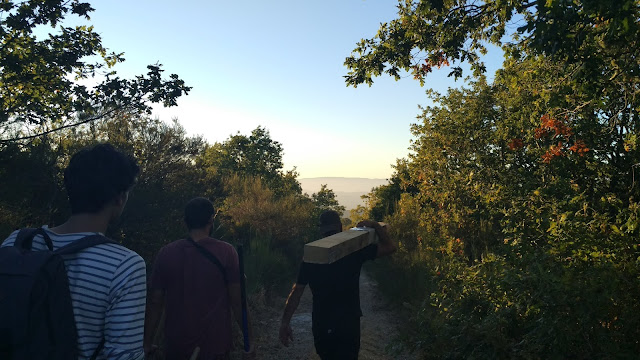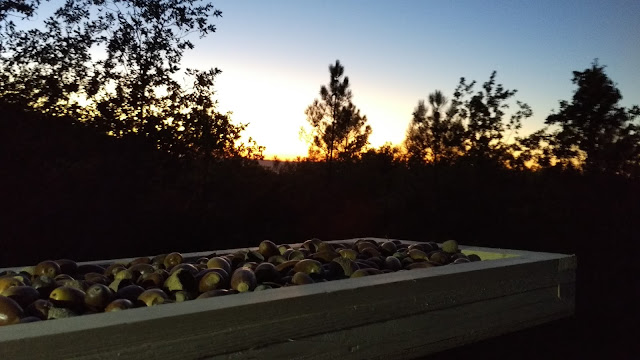Four days ago, October the third, on a beautiful evening we drove in a group of four to Carvalhal de Vermilhas. The goal: To set up our first Jay table (do not Google it, I will explain what it is in the next paragraph). At first we looked for a suitable place to set up the table: A not to difficult to reach location, around which we would like to see more young oak trees growing and where we could dig a hole deep enough to make sure that the post would not fall over later on. After we found a suitable location, we started to dig a hole about 50 centimeters deep with a pickaxe, fixed the post and finally screwed a container to the post. At last we filled the container with acorns we had collected. Now we only have to wait and observe whether the jays would accepts the table and the acorns or not.
More about the jay table. We hope that the Eurasian jays in the area (Garrulus glandarius) will accept the table, that means take the acorns from the table and bury them in the surrounding area. The jay can carry up to 10 acorns at a time and manages to bury a considerable amount within an autumn (3000 – 5000 oaks per bird). In winter the birds will feed on the acorns. However, they will always forget some of the acorns – whether by accident or by intention is still not totally really clear to scientists, since jays will in spring also feed on the „forgotten“ and then freshly germinated plants. Without damaging it the birds take the cotyledons from the young plants and feed them to their fledglings. Through this symbiosis between the animal and the plant, the jays make a significant contribution to the natural spread and rejuvenation of oaks.




